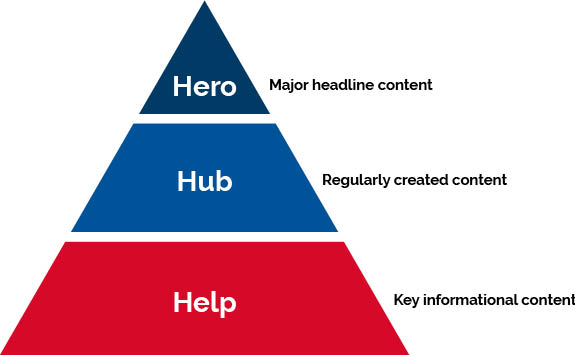Hero, Hub and Help Content
All content that we produce fits into this framework. Understanding it can help you with planning and executing your content.
Content planning
The ‘Hero, Hub, and Help’ content model was originally developed by Google for YouTube.
However, it’s not just helpful for video, it’s a very useful tool for planning and creating content across the board.
Planning your content strategy with this framework in mind takes you away from a broadcast mindset (‘this is what I want to say’). It prompts you to think about your audience and their needs and requirements and how you can best meet them.

Hero content
These are our major headline content marketing and campaign activities. This content takes a lot of planning and consideration, often with significant resources placed behind it. Hero content is likely to have elements of both push and pull marketing behind it to maximise reach and impact.
Examples:
- strategic narrative storytelling
- research headline stories
- key campaigns
Hub content
This is our regularly created content, which engages, attracts and retains our audiences. This content requires regular consideration and planning, as well as reporting and analysis to see what is hitting the mark. Well executed ‘hub’ content builds trust and relationships with our target audiences,
Examples:
- From Blog content (research and reputation campaign storytelling, Business Development and Enterprise blogs)
- news and press articles
Help content
This is our key informational content, which our audiences are especially looking for. They may be carrying out generic searches online and be drawn to our website through well executed ‘help’ content (pull marketing).
They may also have this information presented to them (push marketing). Otherwise, they might directly seek out this information, if they already have a relationship with us.
Examples:
- Belong Blog content (informational student blogs)
- prospectuses and guides for students and carers
- eBooks
- informational web content (eg course listings, explanations of course types or accommodation details)